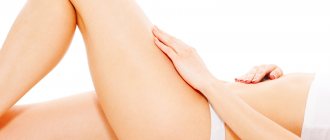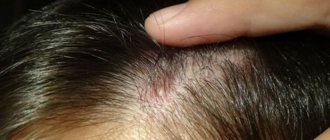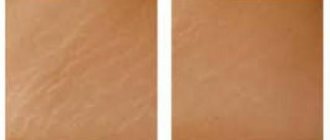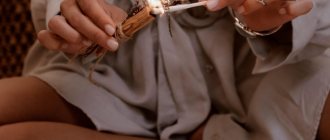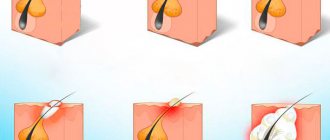- Home >
- Symptoms >
- Pins and needles, goosebumps, numbness in hands
All sorts of unusual sensations in the hands - pins and needles, goosebumps running down the arm, burning, numbness - are called paresthesia in medicine. There are a lot of possible causes for this phenomenon, and therefore the treatment of pins and needles, goosebumps and other strange manifestations of various diseases is not universal.
Reasons for education
The common people came up with this name for the disease due to the fact that in appearance it resembles the skin of a goose. Also sometimes goose bumps are called “goosebumps” if this disease is not so severe. This ailment can be temporary and go away in literally 2-3 weeks, or chronic - it lasts almost a lifetime if no action is taken to get rid of this problem. The main causes of this disease:
- Experiencing strong emotions or feeling cold. Due to these two factors, the cells of the nervous system are excited, which causes “goosebumps”;
- Vitamin deficiency in the body. Initial vitamin deficiency occurs if there is a lack of vitamins A and C and certain minerals: calcium, magnesium, table salt, zinc. The lack of all these elements leads to the formation of goose bumps on the butt.
- Poor nutrition or impaired metabolism.
- Very dry skin. The pores of the skin are too clogged with dead particles, which leads to the occurrence of this disease.
- Problems in the endocrine system.
- Hereditary factor. This is not a common factor, but if it is, it will be difficult to get rid of follicular hyperkeratosis.
- Poor personal hygiene. This includes: too frequent depilation and not using gentle scrubs that remove dead skin layers to prevent clogged pores.
- Individual characteristics of the human body.
Goose bumps often appear in childhood or adolescence due to allergization of the body. And is usually accompanied by mild itching.
Causes of rashes
Pediatricians call prickly heat the most common cause of a small rash on the back, abdomen and buttocks without fever in a child. It worries mainly in hot weather, when the child is tightly dressed. The rashes are also concentrated in the folds of the neck, elbow and knee bends, and groin. When a small rash appears on a child’s body due to prickly heat, it causes discomfort, especially when scratching.
In the summer, the appearance of pimples and redness on the skin is caused by insect bites. The rash appears as bright, flat spots that are itchy and inflamed. Such manifestations on the skin are not dangerous; they require a cool compress and the application of a sedative - Fenistil or Bepanten.
If a small rash is located all over the child’s body, does not itch or cause discomfort, the cause is newborn acne. The main rule for getting rid of the problem is to provide complete skin care. The baby needs to be bathed daily, then blotted with a soft diaper and given an air bath. Before getting dressed, you should apply a softening baby cream or powder to your body. Bathing in a decoction of string helps a lot.
Hormonal rash
Almost all parents notice that a small rash appears on the face of a newborn at 1 month. At the same time, the mammary glands may swell (not only in girls, but also in boys). There is no need to worry about this. Such rashes in the form of small white dots on the nose and cheeks are caused by hormonal changes. The baby's body leaves the antibodies that were transferred to it through the umbilical cord and with mother's milk. Hormonal pimples should not be squeezed; they go away without treatment after 1-2 weeks.
This rash in infants is called neonatal bloom.
Diaper dermatitis
The pathology occurs due to an inflammatory process that develops in response to mechanical, physical and chemical damage to the child’s skin. The main cause of minor rashes is considered to be poor care; rashes are provoked by a tight or improperly worn diaper. Physical factors that cause diaper dermatitis include overheating of the skin and high humidity inside the diaper.
Important! Additionally, the skin becomes irritated due to prolonged contact with urine and feces if the child is rarely washed and changed. A small rash turns into pustules, the skin around it peels and turns red and becomes swollen.
Atopic dermatitis
The disease is hereditary, severe and difficult to treat. The main symptom is itchy skin. The epidermis of the face (cheeks and forehead), buttocks, legs, and scalp is affected. In the acute stage of atopic dermatitis, papular tubercles appear on the skin.
Outside of exacerbation, the pathology worries about dry skin, cracks on the backs of the hands and between the fingers. It is dangerous for a child to scratch itchy areas, as the risk of secondary infection increases. Atopic dermatitis is often complicated by viral and bacterial pathologies - fungus, herpes, staphylococcus.
Signs of allergies
With a small allergic rash on the body, the child’s body can react to external and internal unfavorable factors. The most common irritants include:
- food - if the child is fed breast milk, it means that the mother did not follow a diet and ate highly allergenic foods. This includes red fish, caviar, seafood, honey, chocolate, soy, nuts, cow's milk, blue cheese, red and orange vegetables and fruits;
- pet hair and saliva;
- pollen from plants, including indoor plants;
- poor quality diapers;
- clothing and bedding made of synthetic materials;
- house dust;
- mold.
Allergic manifestations include a rash, red spots, urticaria-type blisters, weeping erosions and ulcers on the surface of the epidermis. Such rashes should be treated under the supervision of an allergist.
Infectious rashes
A small rash all over the body and a high temperature in a child are signs of an infectious disease. Viral pathologies that give similar symptoms include:
- chickenpox - small blisters filled with liquid appear on the skin. Gradually they burst, dry out and form a crust. The rash is characterized by itching, the temperature can reach 39°C or rise slightly;
- rubella - the main symptoms of infection are a rash on the body and enlarged lymph nodes in the neck. At first, small red dots resemble goose bumps and are located on the face, gradually spreading to the entire surface of the body and increasing in size;
- measles - appears as red round spots behind the ears, later they spread to the whole body. The pathology occurs against a background of cough, eye inflammation and high fever;
- scarlet fever - a small rash affects the entire body of the child, starting from the skin of the face, gradually the pimples turn pale. Scarlet fever can be recognized by the red tint of the palate and tongue;
- roseola – initially the child’s temperature rises, and a small rash appears after 3-4 days.
Need to know! Skin rashes in children are often caused by scabies mites. Older children become infected from peers on playgrounds and in kindergarten through close contact. The mite bores passages under the skin, causing itching and burning. Red vesicles with white liquid inside appear between the fingers, on the buttocks, abdomen, arms and legs.
Main affected areas
Follicular hyperkeratosis often affects the buttock area. But other places of rashes have been recorded in the world:
- on the back;
- on the knees;
- on shoulders;
- on the calves;
- goose bumps on the butt;
- on the face;
- legs;
- on the chest.
Depending on the location of the formation of goose bumps, different methods of getting rid of and treating this disease are used.
What causes this condition
Source here and below: Pexels
The exact causes are still unknown, but heredity plays a significant role in the occurrence of follicular hyperkeratosis. Almost half of the patients had a relative with similar skin manifestations.
Allergy sufferers and atopics are more prone to follicular hyperkeratosis. This is also largely due to heredity.
How to get rid of it at home
Many people who value their health are wondering: how to remove goose bumps on the butt without spending a lot of money?
The first and surest step is to reconsider your diet. If you eat food that is rich in calories and chemicals, then you should avoid it and opt for vegetables and fruits. After all, one of the reasons for the formation of goose bumps is a lack of vitamins, so here is an example of products that contain the missing vitamins:
- Vitamin A: liver, pumpkin, dried apricots, chicken egg, fish oil, carrots, parsley, cilantro and spinach.
- Vitamin B: lean pork, beef liver, egg, soybeans, almonds, mushrooms, salmon, asparagus, chicken breast, peanuts and avocado.
- With: rose hips, sweet peppers, parsley, black currants, broccoli, dill, strawberries, kiwi, citrus fruits and peas.
- E: sunflower oil, pine nuts, olive oil, hazelnuts, almonds, salmon, dried apricots, olives and sunflower seeds.
The second way to solve this problem is a bath or sauna. During these procedures, the skin softens, and that dead layer comes off a little. In addition, when steaming the skin, blood flow improves, which restores skin function.
After such a procedure, it is imperative to use different oils on the affected areas of the skin. Experts also recommend drinking mineral water in a bath or sauna, which will help open the pores for better cleansing. And you need to complete this cleansing with a scrub.
The third method is peeling. Many people ask the question: why doesn’t goose bumps go away on the butt? There is an answer! You are not taking enough care of this area of the body. An excellent solution in the fight against goose bumps is peeling (scrubbing). There are a huge number of different brands of scrubs, but it’s better, of course, when you make it yourself. Below is a list and brief instructions for preparing the most popular homemade scrubs around the world:
- Coffee scrub. This scrub is perfect for sensitive skin. You will need:
- coffee grounds (4 tbsp);
- essential oil;
- some boiled water.
Mix all components and thoroughly treat the affected skin.
- Scrub with salt. Not for sensitive skin as it gives strong results. To make it you need:
- 1 tsp. table or sea salt;
- olive oil (just a little);
- massage glove.
Apply the mixture to the mitten and rub vigorously into the skin in a circular motion. Rinse off only with cool water.
- Honey scrub. A very gentle product! You will need:
- 3 tbsp. l. sea salt;
- 2 tbsp. l. honey
Attention! You need to carefully rub in this scrub with light hand movements. After this procedure, the skin will begin to breathe and regenerate better.
The fourth way to combat goose bumps on the butt is wrapping. This is a great addition to peeling. The best ingredients for wrapping are blue clay and seaweed.
The fifth method is massage. By itself, it is ineffective, but if you use all the methods described above, then you will achieve the best effect for your skin. You can do it if there are no contraindications. Of course, massage will not smooth out goose bumps, but the products that will be used in conjunction with it will help the epidermis become softer and healthier.
And the last, sixth way to deal with goose bumps is a solarium. Some experts say that a solarium can be an excellent addition to getting rid of follicular hyperkeratosis. Typically, people suffering from this disease take sunbathing in winter, when goose bumps are especially pronounced.
Treatment of keratosis pilaris
There are many different techniques for treating goose bumps, but before you start using them, consult a therapist. After all, the appearance of goose bumps on the body is not always a dermatological problem and sometimes indicates pathologies of internal organs, the successful treatment of which can ultimately eliminate the manifestations of skin defects.
Convex bumps on the skin look very unaesthetic and can thoroughly ruin the life of their owner. But there is a solution to the problem, although getting rid of goose bumps is quite difficult. The main thing is to approach this issue comprehensively.
Daily care
In order not to rack your brains over the question of how to get rid of goose bumps, just remember that body skin needs daily and proper care. Choose the products that are right for you: creams, gels, lotions, etc. Do not forget about the contrast shower. Complete skin care procedures with uneven skin with moisturizers.
To make goose bumps smooth for a long time, you can add an oil solution of vitamins A and E to creams, lotions or tonics, which are sold at any pharmacy. To improve blood circulation in the skin, try to steam your skin more often, for example, in a bathhouse or sauna. Problem areas should be treated with a scrub or a hard washcloth.
Peeling to get rid of goose bumps
One of the most effective ways to combat goose bumps on the body is exfoliation. It is better to choose a peeling that contains fruit acids or enzymes that promote high-quality exfoliation of dead skin, making it look beautiful.
But salt peeling helps remove goose bumps on the legs. This is a rather crude and radical remedy; people with sensitive skin should not resort to it, so as not to get irritation in addition to existing problems. On the hands and elbows, goose bumps usually disappear after a gentle exfoliation using coconut or orange pulp.
This method allows you not only to remove keratinized epidermis, but also to thoroughly moisturize the skin. A good remedy for goose bumps on the neck is wiping with a swab soaked in kefir and table salt. The skin under the eyes is very delicate, so it is better to use gentle almond peeling in this area.
It is worth knowing that the effect of peeling does not appear instantly. To achieve visible results in the fight against goose bumps, peeling procedures should be carried out in sessions up to 10 times, but not more than 3 times a week.
Wraps for goose bumps
Unfortunately, in the fight against goose bumps, peeling alone is not enough, because the skin must not only be cleansed, but also moisturized and saturated with nutrients. Seaweed wraps are perfect for these purposes. You can also try types of wraps such as cranberry, honey or chocolate.
They normalize the water balance of the skin and ideally saturate the skin with vitamins. Wraps with blue clay and essential oils also perfectly combat goose bumps on the body, evening out its relief.
Masks and baths for goose bumps on the buttocks
Those who suffer from goose bumps on the butt constantly experience tightness and discomfort. Women avoid wearing open swimsuits and short shorts, hiding problem areas of the skin. A bath of oatmeal helps get rid of goose bumps on the buttocks. Oatmeal relieves irritation and perfectly relaxes the skin.
The ways to use oatmeal are very simple. The first is to pour warm water into the bath, into which oatmeal is poured. When they swell you can take a bath. This procedure will require 8-10 glasses of oatmeal. Second method: pour 1-2 cups of oatmeal into a woolen sock and place it in boiling water. When the oatmeal is ready, remove the sock from the pan and wipe the problem areas with it.
You can also use sandalwood powder dissolved in camphor oil or rose water. The resulting paste should be applied to the affected areas of the body twice a day for 1-2 weeks. Nutmeg masks are a good way to deal with goose bumps.
To do this, just pour one tablespoon of ground nutmeg into two glasses of warm water. Apply the resulting paste to the buttocks 2-3 times a day and wash off after 30 minutes. You can periodically make juice from a bunch of spinach, oranges, grapes, carrots, strawberries (in equal quantities) and apply it for one to two weeks, 3-4 times a day, to areas of the body affected by hyperkeratosis.
Massage to combat goose bumps
If you want to make goose bumps less noticeable to others, you should resort to massage. Both general body massage and vacuum or anti-cellulite massage are suitable. If you do not have such a problem as varicose veins, you can undergo honey massage procedures. It will not only give the skin silkiness and radiance, but also strengthen the body as a whole.
Massage movements improve blood circulation in the body, tone and tighten the skin, which has a beneficial effect on its appearance. Dry self-massage using a brush with natural bristles is a good remedy for rough skin.
Solarium, sunbathing for rough skin
Goose bumps most often occur during the cold season, when the body experiences a lack of sunlight and a deficiency of vitamins. The problem can be solved by using an artificial sun, that is, a solarium.
To achieve the effect, it is enough to visit the solarium once a week for 7-10 minutes. In the summer, you can simply expose problem areas of your skin to the sun more often.
Medicines
If your examination reveals any abnormalities in test results (metabolic disorders, lack of vitamins), your doctor may prescribe you special medications that are recommended to be combined with skin care procedures.
For example, preparations with vitamin A and ascorbic acid, vitamin E capsules. Pharmaceutical preparations for the care of goose bumps are made on the basis of glucocorticosteroids, salicylic acid, and retinoids.
Proper nutrition for goose bumps
Another way to combat goose bumps is to eat foods rich in vitamins A, C and E. Include blueberries and carrots in your diet. They should be consumed with milk or kefir, as dairy products help improve the absorption of natural vitamins.
We hope that our tips and recommendations will help you improve the condition of your problematic skin and make it soft and silky. It is important to take care of yourself systematically, compensate for the lack of vitamins in a timely manner by taking medications and diversify your menu with a large number of vegetables, fruits, nuts and unrefined oils.
In children
If you find that your child has mustache skin on his butt and you don’t know what to do, don’t panic and sound the alarm. First you need to understand the reasons for the manifestation of follicular hyperkeratosis in young children. In addition to the reasons described above, there are a number of others that can lead to goose bumps in a child:
- low air humidity in the room where the child is often located;
- improper care - since the skin of children is sensitive and delicate, any external influence (hypothermia, overheating, high humidity) can cause the manifestation of this disease;
- consequence of skin diseases.
It is recommended to go to a general practitioner so that he can determine the exact cause of follicular hyperkeratosis. Once you find out the reason why goose bumps have formed on your butt, you need to immediately begin treatment.
Below is a list of actions that will help in the fight against goose bumps:
- If your home has low humidity, then you need to purchase a humidifier.
- When bathing a child, you do not need to resort to special cosmetics, but it is best to use a decoction of herbs (chamomile, thyme, string, etc.). In addition, you need to pay attention to the temperature of the water in which you bathe your child. After bathing, wipe your skin dry and anoint it with moisturizer or baby cream.
- Before a walk on a sunny day, apply a cream that will protect your skin from ultraviolet radiation.
- If the doctor says that your child lacks microelements, then you need to start giving a vitamin-mineral complex.
When it comes to a child, it is better not to self-medicate, but to seek help from professionals.
What is follicular hyperkeratosis and what areas of the skin does it affect?
Follicular hyperkeratosis, or goose bumps, is a fairly common skin condition in the form of a rash that occurs in early childhood or adolescence. It has a characteristic seasonality: in winter the rash worsens, and in summer it becomes almost invisible.
Manifestations of follicular hyperkeratosis are caused by the fact that dead skin cells in the form of scales fill the hair follicles and form characteristic “plugs”. As a result, small nodules form on the skin of the shoulders, front of the thighs, cheeks and buttocks. Very often, the skin around the nodules is prone to dryness, irritation and redness.
Drug treatment
After consultation with a dermatologist, depending on the severity of the disease, he may prescribe a course of treatment using the following drugs and medications:
- vitamins of group A - but as many experts say, taking vitamins has only a temporary effect and, unfortunately, leads to skin irritation. Although this is all individual;
- daily care with lotion or cream that contains lactic acid. They will soften and moisturize the skin, improve its appearance;
- steroids are used (local) to reduce inflammation and reduce redness.
- use of cosmetics that contain fatty components. They also reduce irritation, soften the skin and improve its appearance.
Goosebumps
Diabetes
Iron deficiency
70513 09 December
IMPORTANT!
The information in this section cannot be used for self-diagnosis and self-treatment.
In case of pain or other exacerbation of the disease, diagnostic tests should be prescribed only by the attending physician. To make a diagnosis and properly prescribe treatment, you should contact your doctor. The feeling of crawling on the skin: causes of occurrence, what diseases it occurs with, diagnosis and methods of treatment.
The human nervous system, with the help of reflex impulses, influences organs and tissues, helping the body adapt to changing environmental conditions. A reflex is understood as a response mediated by the nervous system to any stimulus (external or internal).
Throughout life, a person acquires some reflexes and loses others. However, there is a group of reflexes with which we are born and live. These include the so-called goosebumps, or pilomotor reflex.
The pilomotor reflex is an involuntary contraction of the smooth muscle structures at the base of the hair follicle, as a result of which the hairs rise to cover the surface of the skin.
Evolutionarily in animals, this reflex contributes to at least two things. Firstly, creating an additional air layer between the animal’s skin and the environment, which makes it possible to retain heat and protect against hypothermia. Secondly, with the help of the pilomotor reflex, the animal takes on a more intimidating appearance, which helps in intimidating enemies.
In humans, the pilomotor reflex has lost its former significance. However, goosebumps, or goosebumps as they are also called, have occurred to everyone more than once. The feeling of goose bumps on the skin is a type of paresthesia.
Paresthesia is understood as an unusual, pretentious feeling created by tactile receptors in the absence of their actual irritation. Other types of paresthesia include an unexplained feeling of tingling, burning, etc.
Types of goosebumps
The feeling of goosebumps on the skin can cover the entire surface of the body or occur only in a certain area, i.e. be localized. In some cases, it may be transitory, situationally determined and therefore not bring much discomfort. In others, paresthesias are long-lasting and persistent, then they can reduce the quality of life and become a cause for concern and see a doctor.
Possible causes of goosebumps
The occurrence of goosebumps is based on a reflex response of the nervous system. The reflex can be triggered both by stimulation of receptors - peripheral nerve endings (for example, cold receptors under the influence of cold air or cold water), and by stimulation of structures located in the central nervous system, for example in the brain.
This is typical for the appearance of goosebumps on the skin when a feeling of aesthetic or other pleasure or fear arises.
With inadequate stimulation of certain nervous structures, a person also develops piloerection (raising of hairs), which is characteristic of various diseases accompanied by damage to the nervous system. Peripheral nerves are most often affected, and, as a rule, the pathological process spreads from the smallest branches of nerves upward, capturing larger and larger nerve structures. Therefore, the appearance of paresthesia may be the first symptom of the disease.
What diseases can cause the feeling of crawling on the skin?
First of all, it is worth highlighting a group of diseases accompanied by primary damage to nerve fibers (neuropathy). These include:
- diabetic polyneuropathy
, which occurs with an uncontrolled persistent rise in blood glucose levels; - polyneuropathy
caused by a lack of vitamins and nutrients in the body, for example iron, vitamins B, C; - toxic polyneuropathy
, which occurs under the influence of toxins entering the body from the outside or being metabolic products; - alcoholic polyneuropathy
- damage to peripheral nerves by metabolic products of ethyl alcohol, is a special case of toxic neuropathy; - autoimmune diseases
, accompanied by nerve damage due to abnormal activation of immune system cells against the body's own tissues; - demyelinating diseases
, for example, multiple sclerosis, characterized by the destruction of nerve sheaths; - post-traumatic neuropathy
, which occurs due to mechanical effects on nerve fibers; - neuropathy associated with degenerative changes in the spine
, leading to compression of the nerves and disruption of their functioning; - hereditary degenerative diseases
of the nervous system, for example, Charcot-Marie-Tooth disease, one of the symptoms of which is various paresthesias.
The cause of the unpleasant sensation in the form of goosebumps crawling on the skin may be a pathological focus in the brain
(gliosis, tumors, etc.).
A range of mental illnesses
One of its symptoms is the appearance of paresthesia.
In patients with epilepsy
Paresthesias often appear as part of the “aura”, i.e. subjective sensations foreshadowing the imminent development of an epileptic attack.
Other reasons for the appearance of goosebumps include, for example, poor circulation
in one or another part of the body, leading to oxygen starvation of tissues.
Which doctors should you contact if you experience a crawling sensation?
Traditionally, the diagnosis and treatment of paresthesia, a type of which is the feeling of crawling on the skin, is dealt with, because this phenomenon is directly related to the functioning of the nervous system. However, if the cause of nerve damage is a somatic disease, i.e. disease of internal organs, then in addition to a neurologist, such a patient is seen by a vascular surgeon and other specialists, depending on the underlying disease.
Diagnosis and examinations for goosebumps
The causes of paresthesia are extremely diverse, therefore, when you come to your appointment, you need to be prepared for the fact that the doctor will be interested in how long ago the crawling sensation appeared, changes in diet, lifestyle, taking medications and supplements, past infectious diseases, travel to other countries, and etc. After a comprehensive clinical study, the most likely cause of the feeling of crawling on the skin will be determined, and depending on it, the patient will be referred for additional laboratory and instrumental studies.
- General blood test with leukocyte formula to exclude anemia, infectious and inflammatory processes, etc.
Prevention
In the summer, people with this disease have a particularly difficult time. A person with goose bumps on his butt is unlikely to take photos in a swimsuit or shorts. After all, he is ashamed of himself and his image. Because of this, people often develop complexes about their appearance. Therefore, to avoid such a disease, you need to follow a number of recommendations:
- every time you bathe, use a medium-hard washcloth;
- for preventive purposes, do light peeling of all parts of the body;
- After a shower, doctors recommend applying moisturizers or soothing products;
- pay attention to your diet.
It is known that if you eat right, you can avoid the occurrence of many diseases.
